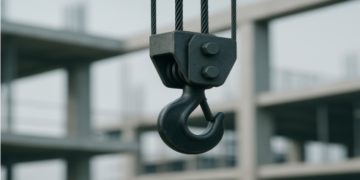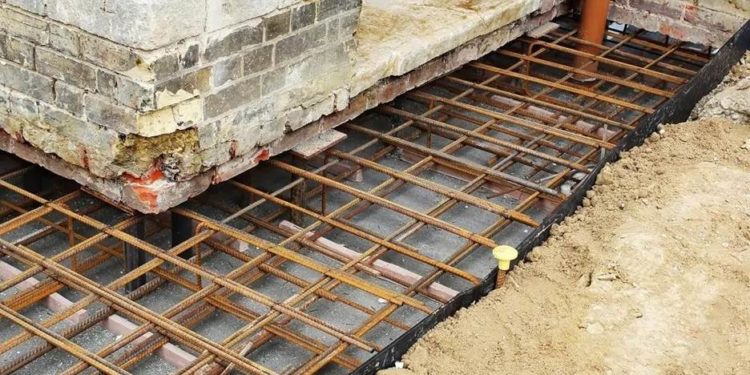The foundation plays a very important role in the structural integrity of a building. It supports the entire weight of the structure and helps distribute it evenly to the ground below, keeping the building level and preventing it from shifting, sinking, or cracking over time. Moreover, it also protects the structure from damage caused by soil movement, moisture, and other environmental factors.
Without a proper foundation, even a well-built building can develop serious problems that may be costly and dangerous to fix. Therefore, learning about effective methods available to strengthen a weak foundation is crucial to restore stability to the building and avoid expensive repairs or unwanted incidents in the future.
How to Strengthen a Weak Foundation?
Underpinning
Underpinning is one of the most common and trusted methods to strengthen a weak foundation. It involves extending the foundation deeper into the ground by adding support beneath the existing base. This is usually done by digging under sections of the building and pouring concrete in stages. This method helps the foundation rest on stronger, more stable soil.
This method works well when a building has settled due to soft or shifting ground. It improves the load-bearing strength and provides long-term stability, making it a reliable choice for older or damaged buildings.
Resin Injection
Resin injection is a modern technique used to fill gaps or voids in the soil beneath a building. A special resin material is injected into the ground, where it expands and hardens, lifting and supporting the foundation from below. The process is quick and doesn’t require heavy digging.
It’s useful for small or moderate movements in the building and can be completed with little disruption. It not only strengthens the ground but also helps reduce sinking and stops further shifting, especially in areas with loose or weak soil.
Concrete Piering
Concrete piering is another effective way to support a weak foundation. It involves drilling deep holes next to the foundation and filling them with reinforced concrete to create strong piers. These piers reach deeper, more solid layers of soil and help carry the weight of the building. Once the piers are set, the building can be lifted slightly to re-level it.
This method is strong and long-lasting, and it works well for heavy structures or properties with major settling problems.
Steel Push Piers
Steel push piers are long metal rods that are driven deep into the ground below a building until they reach stable soil. The weight of the building is then transferred onto these steel supports. This technique is often used when the soil close to the surface is too soft or weak. It helps stop further sinking and can also lift the building back to its original level.

Slab Jacking
Slab jacking is a method used to lift sunken concrete slabs, such as floors or patios, back to their original level. A mix of cement, water, and other materials is pumped under the slab, filling the space and raising it gently. This process works well when only parts of the building have dropped. It is less invasive and more affordable than full replacement, improving safety, preventing further damage, and helping restore a flat and even surface inside or around the building.
Adding a Retaining Wall
A retaining wall can help relieve pressure on a foundation, especially if the building is on a slope or near unstable soil. Retaining walls are made from concrete, stone, or brick and are placed close to areas where support is needed to hold back soil and stop it from shifting toward the building. It also helps manage water flow and prevent erosion, which are both common causes of foundation damage.
Improving Drainage Around the Building
Poor drainage is a major cause of foundation damage. Improving the way water flows around a building can help protect and strengthen the foundation. This can be done by adding gutters, downspouts, and drainage pipes to carry water away from the structure. You can also slope the soil away from the foundation so rainwater doesn’t gather near the base.
Combine Multiple Methods
In many cases, the best way to strengthen a weak foundation is to combine two or more of the above methods. For example, underpinning in Devon — a process often searched as what is underpinning — involves strengthening an existing foundation by extending it deeper or widening its base. It is commonly used along with soil stabilisation or improved drainage to give extra support. This approach is often necessary when the damage is severe or the ground conditions are complex. It results in a stronger, safer, and more secure foundation for the future.
Key Takeaway
Some buildings, especially older ones or those built on unstable ground, can develop weak foundations over time due to poor soil conditions, water damage, and natural settling. It can lead to visible problems like cracks in walls, uneven floors, or doors that don’t close properly. However, you can use above mentioned methods to strengthen a weak foundation and retain the stability and structural integrity of your building.











































































